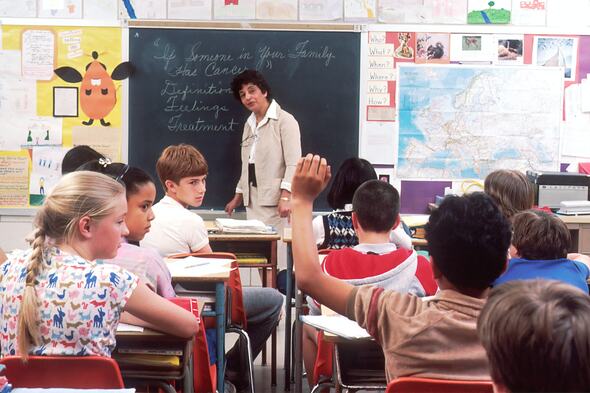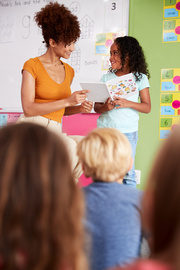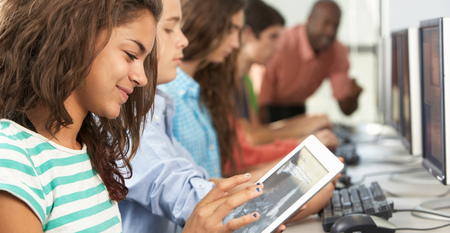What Social Media Can Teach Educators About Encouraging Engagement From Students
Social media, often seen as an entertainment hub, holds unexpected lessons for educators seeking to boost student engagement. The way social platforms attract and retain the attention of their users is not much different from the kind of engagement needed in classrooms.
From real-time interactions to active content creation, the practices that make social media platforms successful have a potential goldmine of applications in the education sector.
10 Things Social Media Can Teach Educators About Engagement
This guide explores how adopting digital norms into teaching methods creates vibrant learning environments and encourages students to participate actively in their educational journey.
1. Real-Time Interaction
In the online world, reactions and responses are often instant, bringing an energetic and engaging flow to conversations. Translating this into the classroom could mean utilizing live polls during lessons, making room for spontaneous physical or virtual discussions.
Not only does this mimic the dynamic interactivity students comfortably enjoy in their digital lives, but it can also serve to hold their attention and deepen their understanding of topics.
2. Visual Elements Are Key
Notice how social platforms like Pinterest captivate users through striking visuals and easy-to-digest infographics. This has strong applications in an educational setting, converting complex academic concepts into visually engaging materials can simplify learning for students.
For example, mind maps could break down intensive chapters into manageable chunks, while timelines can structure historical events coherently in a more visually appealing way.
3. Embrace Video Content
Let’s explore the idea of embracing video content. The world of social media has shown us how video content can easily captivate audiences. In education, this can be translated to practices such as creating back-to-school videos or short digital lessons that are separated into chunks.
Videos provide students with an alternative means of absorbing information, and they can standardize teaching quality by providing consistent messages throughout the school year.
4. Personalization Matters
Through personalization, users receive tailor-made feeds based on their interests and activities, contributing to a more engaging experience. Teachers can personalize their instruction by identifying students’ preferred learning styles and adapting their teaching methods accordingly.
Employing personalization tactics boosts student engagement, thereby improving the overall effectiveness of teaching—replicating the very thing that makes social platforms so appealing.
5. Value of Feedback Mechanism
On social media platforms like Instagram or Twitter, likes and retweets serve as instant feedback, reflecting people’s appreciation or agreement. Likewise, in classrooms, consistent and immediate feedback on student performance can create an active learning environment.
From participation grades to quick quizzes in between lectures, these small but significant evaluations offer students a sense of accomplishment and motivate them to stay engaged.

6. User-Generated Content Boosts Engagement
Just as a post or a tweet encourages more interaction on online platforms, active involvement in producing class content can help stir student enthusiasm. For example, students could take turns facilitating discussions, creating presentations, or designing classroom materials.
Ultimately, integrating user-generated content into the classroom not only sparks creativity and deepens understanding but also enhances critical thinking and collaboration skills.
7. Celebrate Success Publicly
Celebrating success publicly takes a cue from the way social media platforms cherish public acknowledgments. On these sites, a simple shout-out or tag gets noticed and appreciated by users. Teachers can adopt this tactic to foster an encouraging learning climate too.
Recognizing academic achievements or positive behaviors during class, featuring exemplary work on classroom displays, or sending notes home can do wonders for boosting motivation.
8. Peer-to-Peer Learning Opportunities
Peer-to-peer is a form of learning that encourages students to learn from each other, much the same way that users in digital communities share knowledge and experiences. For example, students could pair up for projects, mirroring the interactive nature of online spheres.
This not only allows students to learn different perspectives but also fosters skills like communication, collaboration, and critical thinking, making peer-to-peer learning very effective.
9. Fostering a Sense of Community
Just like users feel a sense of belonging in various Facebook groups or Reddit communities, students, too, need to feel part of a cohesive and supportive setting. Creating environments where each individual feels valued and comfortable to share their views builds trust.
Encouraging group activities, addressing students by their names, or allowing room for open discussions are small gestures that contribute toward strong community bonding.
10. Continuing Conversation Outside Classroom Boundaries
Dynamic platforms like Google Classroom show how education can extend beyond the typical time bounds of school. By sharing additional information, educators can encourage students to explore and engage with learning materials outside the classroom setting.
This integration of classroom teachings into students’ digital lives promotes continuous learning and allows for flexible study times, thus stimulating an ongoing academic conversation.
In Conclusion…
With the line between the virtual and real worlds blurring, embracing lessons from social media can help bridge this gap in classrooms. Educators are encouraged to experiment with these strategies, adapting their teaching practices to mirror the engaging elements of the internet.





 Explore the Safe Search Engine -
Explore the Safe Search Engine - 